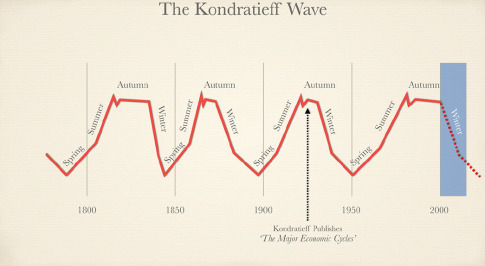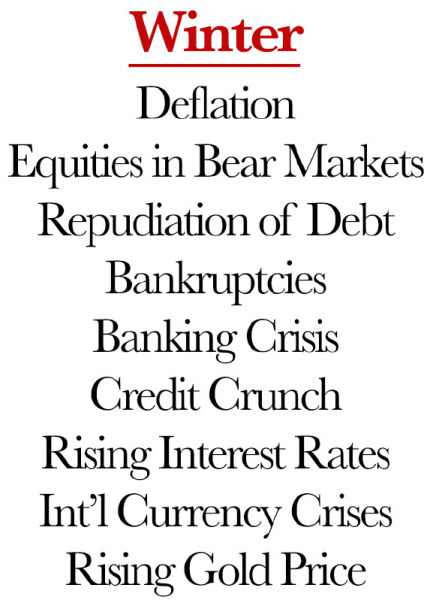– Things That Make You Go Hmmm… Like The Perfect ‘Kondratieff Winter’ Storm Ahead (ZeroHedge, Oct 8, 2014):
The following chart-heavy presentation from Grant Williams is among his best as he wends his way methodically from the 19th century to the present day (and into the future) examining “The Consequences of the Economic Peace.” From Keynes to Kondratieff and from Napoleon to Nixon, Williams looks at the ramifications of several decades of easy credit and attempts to draw parallels with a time in history when the world looked remarkably similar to how it does now (as he notes “that last time didn’t end so well, I’m afraid.”) The real day of reckoning (Williams notes rather ominously), when the unconscionable level of debt that has been built up during the fiat money era finally topples over under its own weight like the giant wave in The Perfect Storm, lies ahead of us.Authored by Grant Williams via Mauldin Economics,
…
In 1920, a year AFTER the Treaty of Versailles, a Russian economist called Nikolai Kondratieff founded something he named The Institute of Conjuncture, at which he and a team of fellow economists studied, yes, conjuncture — or business cycles, with a particular focus on the long waves they identified within those cycles.
Over the years since Kondratieff first laid out his theory on long-wave cycles, a tremendous debate has ensued as to the usefulness of such long-term prognostication; but there is one very good reason why I (and many others) believe there to be a significant advantage gained through the study of long-wave cycles…
- (Wikipedia): Long-wave theory is not accepted by most academic economists.
…
Kondratieff, being a Russian, of course took the long view.
He took Schumpeter’s four stages (expansion, crisis, recession, and recovery) and equated them to the four seasons in a year. Once he had identified what he felt to be the length of each “Spring,” “Summer,” “Autumn,” and “Winter,” Kondratieff had his “Wave;” and, as it turned out, that Wave ran for approximately 53 years.
In 1925, when he published his book The Major Economic Cycles, using existing data, Kondratieff overlaid his wave on world history and projected it forward — meaning that everything for the 89 years that followed was conjecture on his part…
How’d he do? Well, as it turns out, surprisingly well. Kondratieff nailed far too many major turns to have his work simply dismissed, and his most recent turn into Winter occurred in 2000 or, for those of you who measure the passing of time by such things, precisely at the bursting of the tech bubble.
The blue shaded area shows how far into the current Kondratieff downwave we are and — far more importantly — how much farther we have to go before things are supposed to turn around.
But what do the inner workings of a Kondratieff Winter look like? And are we in the middle of one, as a nearly 90-year-old forecast would have us believe?
Like Schumpeter’s cycles, the four seasons in a Kondratieff Wave are broken down and characterised by the phenomena usually seen during each specific phase of the full cycle.
I won’t go through all four seasons now, as we don’t have time, but rather we’ll focus on the longest phase — Winter — as it’s the one we find ourselves mired in.
And as Grant Williams goes on to describe, Kondratieff is still doing particularly well to this day…
Read the full presentation below (or via HTML here)

